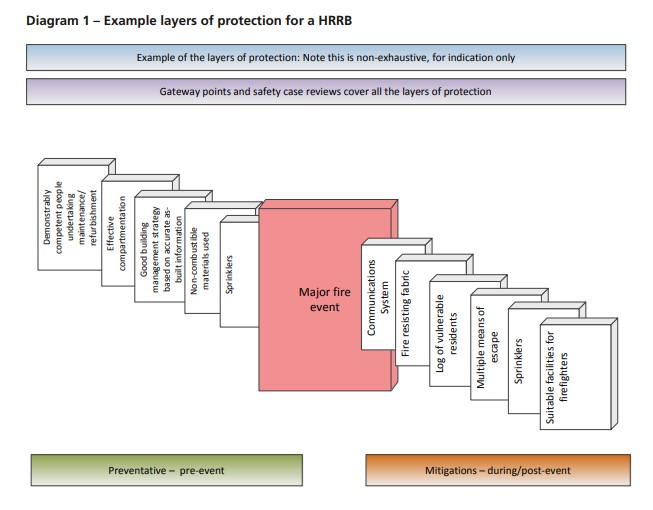Systems approach to building design and construction
Contents |
[edit] Introduction
A systems approach is a concept built on the idea that all things are connected and dependent on each other. It is associated with business, but can also be applied to construction in terms of project management and other areas such as safety, infrastructure and net-zero buildings.
[edit] History
As an intellectual concept, the systems approach originated in the 1940s and 1950s. It was first formally proposed by Ludwig von Bertalanffy (originally known as general system theory or GST), an Austrian biologist who proposed the idea that open, organic systems (such as living things) were not necessarily ruled by classical laws of thermodynamics. He recognised that these elements were affected by, or interacted with, the environment, which meant understanding the system required an examination of each element along with its related processes.
A systems approach considers the attributes of an entire system to achieve the objective of a system through the anticipation of complex behaviours. It considers two basic components: elements (or components) and linking processes:
- Elements are essential, connected things such as objects, people, structures, events, concepts, behavioural patterns and so on. These interacting elements create a system of interest (SOI).
- Processes in the system are those events that transform the SOI into a holistic entity. Each element of the system plays its own role in the process towards becoming a complex whole.
[edit] A systems approach to construction
A systems approach to the built environment looks at how elements (or components) in the building work together as a whole instead of considering how the elements perform or function on their own. A successful outcome will require the development and application of linking processes - perhaps in the form of specifications - based on the purpose of the completed project.
The importance of a systems approach to construction was raised in the examination of consequences associated with the Grenfell Tower fire. In Building a Safer Future, Dame Judith Hackitt suggests that; “…there is a need for a radical rethink of the whole system and how it works. This is most definitely not just a question of the specification of cladding systems, but of an industry that has not reflected and learned for itself, nor looked to other sectors.”
As a result, Building a Safer Future puts forward the idea of delivering building safety as a system rather than by considering a series of competing or isolated objectives. The significance of a systems approach is stressed in terms of risk management, considering the layers of protection to ensure building safety for every structure that falls under the regulatory framework.
The risk management diagram above shows the layers of protection which may be in place for a high rise residential building to prevent and mitigate the risk of a large fire. Each of these layers of protection form part of an integrated safety strategy for the building. Some layers are physical and inherently provide higher levels of protection when installed. Some layers are system related: in other words a competent person needs to appropriately instal and maintain a physical control for it to deliver its protective function.
The report also suggests the regulatory framework should treat the building as a single entity (a system encompassing sub-systems) and a new over-arching Approved Document should be published describing the system and the holistic analyses that must be completed when undertaking building work. This should define the requirement to understand the interactions of the system and its comprising subsystems in both normal operation and outside normal conditions.
[edit] Related articles on Designing Buildings Wiki
- A systems approach to net-zero.
- Building systems.
- Career development for infrastructure leaders.
- Grenfell Tower articles.
- Grenfell Tower Fire.
- Hackitt review of the building regulations and fire safety, final report.
- Risk management.
[edit] External resources
Featured articles and news
RTPI leader to become new CIOB Chief Executive Officer
Dr Victoria Hills MRTPI, FICE to take over after Caroline Gumble’s departure.
Social and affordable housing, a long term plan for delivery
The “Delivering a Decade of Renewal for Social and Affordable Housing” strategy sets out future path.
A change to adoptive architecture
Effects of global weather warming on architectural detailing, material choice and human interaction.
The proposed publicly owned and backed subsidiary of Homes England, to facilitate new homes.
How big is the problem and what can we do to mitigate the effects?
Overheating guidance and tools for building designers
A number of cool guides to help with the heat.
The UK's Modern Industrial Strategy: A 10 year plan
Previous consultation criticism, current key elements and general support with some persisting reservations.
Building Safety Regulator reforms
New roles, new staff and a new fast track service pave the way for a single construction regulator.
Architectural Technologist CPDs and Communications
CIAT CPD… and how you can do it!
Cooling centres and cool spaces
Managing extreme heat in cities by directing the public to places for heat stress relief and water sources.
Winter gardens: A brief history and warm variations
Extending the season with glass in different forms and terms.
Restoring Great Yarmouth's Winter Gardens
Transforming one of the least sustainable constructions imaginable.
Construction Skills Mission Board launch sector drive
Newly formed government and industry collaboration set strategy for recruiting an additional 100,000 construction workers a year.
New Architects Code comes into effect in September 2025
ARB Architects Code of Conduct and Practice available with ongoing consultation regarding guidance.
Welsh Skills Body (Medr) launches ambitious plan
The new skills body brings together funding and regulation of tertiary education and research for the devolved nation.
Paul Gandy FCIOB announced as next CIOB President
Former Tilbury Douglas CEO takes helm.
UK Infrastructure: A 10 Year Strategy. In brief with reactions
With the National Infrastructure and Service Transformation Authority (NISTA).
























